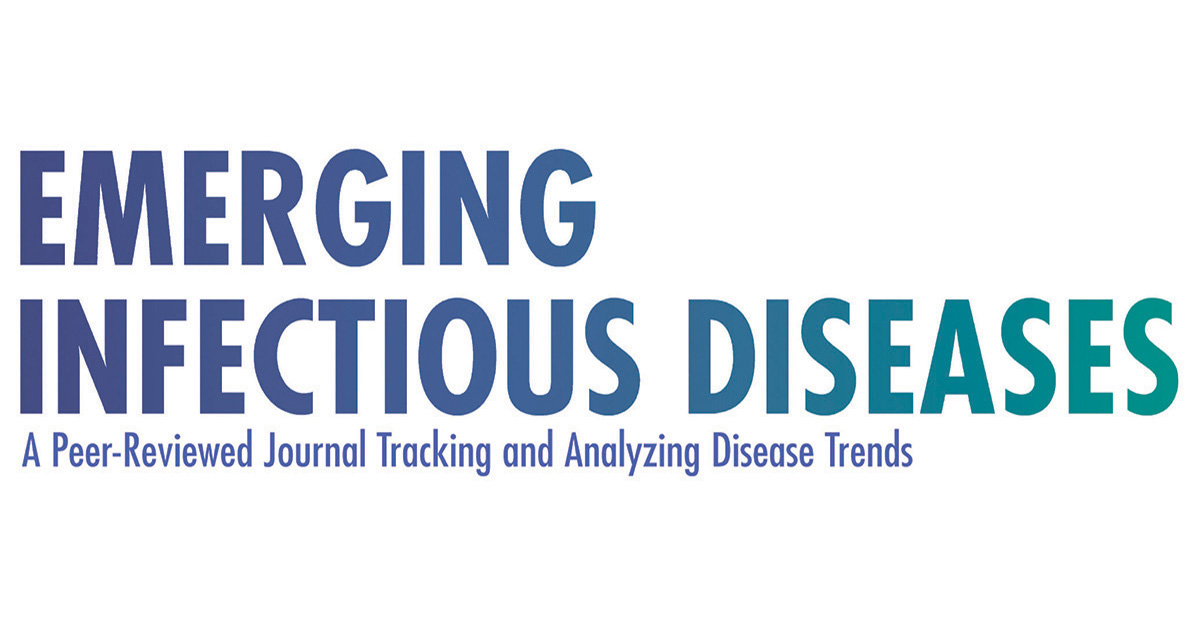Re: Undiagnosed illness, 19 fatalities since April 2011 - Viet Nam: Quang Ngai, ProMED RFI- unspecified rickettsia identified
Published Date: 2012-04-27 14:37:37
Subject: PRO/EDR> Undiagnosed illness - Viet Nam (04): (QG) rickettsia susp, RFI
Archive Number: 20120427.1116144
UNDIAGNOSED ILLNESS - VIET NAM (04): (QUANG NGAI) RICKETTSIA SUSP. REQUEST FOR INFORMATION
************************************************** *****************************************
A ProMED-mail post
ProMED-mail is a program of the
International Society for Infectious Diseases
Date: Wed 25 Apr 2012
Source: Quang Ngai Province website [edited]
The SGGP (Sai Gon Revolution Newspaper) quoted Quang Ngai Health Department director Mr Pham Hong Phuong as saying in the evening of Tuesday (24 Apr 2012) that a rickettsia virus [rickettsia are bacteria, not viruses] was found to be the cause of the mystery disease in the mountainous district, adding that 14 out of total 26 blood sample tests on Ba Dien infected residents in Ba To district were positive for rickettsia [bacteria].
Mr Phuong said 30 per cent of the tested samples have found that erythrocytes that are small and fragile, that could have caused death in patients easily, and added that he has recently requested Quang Ngai Government to equip the provincial general hospital with ultrafiltration and special medicines to deal with the historical disease.
Quang Ngai has reported that so far at least 19 people have been killed and 172 have been injured by the disease, which is being closely watched by the Government of Viet Nam and also the World Health Organization, which has recently released information on its website to readily help Viet Nam deal with the strange disease. Currently, Quang Ngai Government has been making more efforts in providing medical and financial assistance to treating infected patients.
According to Mr Phuong, a special task delegation from the Ministry of Health (MoH) will [visit a 2nd time] the disease affected-mountainous region on 27 Apr 2012 in a bid to [determine the] causes of the skin disease.
Recently, 19 pupils in the other mountainous region of Son Ba Commune, Son Ha district, have been infected with another skin disease on hand, foot and face [?hand-foot-mouth disease] and they are under treatment in local health stations.
--
communicated by:
Viki Hansen-Landis, RN, MPH, CHES
Senior Medical Communications Specialist
Medical Information and Analysis
International SOS
[The news report above says that rickettsiae were identified in 14 of 26 blood samples. What test was used to accomplish this identification is not specified, nor is the rickettsial species specified. The _Rickettsia_ genus describes small obligate intracellular parasites that are maintained in animal and arthropod reservoirs and transmitted by arthropod vectors (ticks, fleas, lice, or mites) to humans.
Scrub typhus and murine typhus are likely the most common rickettsial diseases in Viet Nam (http://cid.oxfordjournals.org/conten...nt_4/S145.full). Scrub typhus, caused by _Orientia tsutsugamushi_ , a rickettsial organism, is transmitted by bite of larval mites (chiggers), which serve as both the vector and the reservoir. Rodents of (rats and mice) are common hosts for the mites. Fever, headache, lymphadenopathy, myalgias, a sore at the site of the chigger bite, and rash that is unlike the rash described in patients in the current outbreak are common. Patients with severe scrub typhus can develop multiorgan failure and disseminated intravascular coagulopathy (DIC) with hemorrhage, with mortality rates 1-30 per cent in untreated patients.
Murine typhus is a fleaborne rickettsial disease caused by _Rickettsia typhi_. Rats are the primary animal reservoir of _R. typhi_. Humans are usually infected by contact with infected flea feces, either by inoculation into excoriated fleabites, inhalation, or ingestion. Symptoms include fever, headache, chills, vomiting, nausea, myalgias, and a rash that is unlike the rash described in patients in the current outbreak. Murine typhus usually resolves within 3 weeks, even if untreated. However up to 4 per cent of patients sick enough to be hospitalized will die from the infection.
The news report above also says that 30 per cent of the tested blood samples had erythrocytes that were small and fragile, suggesting the possibility of hemolysis, which can occur in scrub typhus with DIC. Obviously we need more information as to the way the diagnosis of rickettsial infection was made.
Quang Ngai is a Vietnamese province located in the South Central Coastal region along the South China Sea, 883 km south (549 mi) of Hanoi and 838 km (521 mi) north of Ho Chi Minh City (http://en.wikipedia.org/wiki/Quang_Ngai_province). The province has a large plain along the coast and in the center of the province and has mountains and hills in the west. Ba To is a rural district of Quang Ngai province with a population of 47 268 in 2003 (http://en.wikipedia.org/wiki/Ba_To_District).
A map of Viet Nam provinces can be seen at http://upload.wikimedia.org/wikipedi...ovincesMap.png. Viet Nam may also be found on the interactive HealthMap/ProMED-mail map at http://healthmap.org/r/2bxT. - Mod.ML]
Published Date: 2012-04-27 14:37:37
Subject: PRO/EDR> Undiagnosed illness - Viet Nam (04): (QG) rickettsia susp, RFI
Archive Number: 20120427.1116144
UNDIAGNOSED ILLNESS - VIET NAM (04): (QUANG NGAI) RICKETTSIA SUSP. REQUEST FOR INFORMATION
************************************************** *****************************************
A ProMED-mail post
ProMED-mail is a program of the
International Society for Infectious Diseases
Date: Wed 25 Apr 2012
Source: Quang Ngai Province website [edited]
The SGGP (Sai Gon Revolution Newspaper) quoted Quang Ngai Health Department director Mr Pham Hong Phuong as saying in the evening of Tuesday (24 Apr 2012) that a rickettsia virus [rickettsia are bacteria, not viruses] was found to be the cause of the mystery disease in the mountainous district, adding that 14 out of total 26 blood sample tests on Ba Dien infected residents in Ba To district were positive for rickettsia [bacteria].
Mr Phuong said 30 per cent of the tested samples have found that erythrocytes that are small and fragile, that could have caused death in patients easily, and added that he has recently requested Quang Ngai Government to equip the provincial general hospital with ultrafiltration and special medicines to deal with the historical disease.
Quang Ngai has reported that so far at least 19 people have been killed and 172 have been injured by the disease, which is being closely watched by the Government of Viet Nam and also the World Health Organization, which has recently released information on its website to readily help Viet Nam deal with the strange disease. Currently, Quang Ngai Government has been making more efforts in providing medical and financial assistance to treating infected patients.
According to Mr Phuong, a special task delegation from the Ministry of Health (MoH) will [visit a 2nd time] the disease affected-mountainous region on 27 Apr 2012 in a bid to [determine the] causes of the skin disease.
Recently, 19 pupils in the other mountainous region of Son Ba Commune, Son Ha district, have been infected with another skin disease on hand, foot and face [?hand-foot-mouth disease] and they are under treatment in local health stations.
--
communicated by:
Viki Hansen-Landis, RN, MPH, CHES
Senior Medical Communications Specialist
Medical Information and Analysis
International SOS
[The news report above says that rickettsiae were identified in 14 of 26 blood samples. What test was used to accomplish this identification is not specified, nor is the rickettsial species specified. The _Rickettsia_ genus describes small obligate intracellular parasites that are maintained in animal and arthropod reservoirs and transmitted by arthropod vectors (ticks, fleas, lice, or mites) to humans.
Scrub typhus and murine typhus are likely the most common rickettsial diseases in Viet Nam (http://cid.oxfordjournals.org/conten...nt_4/S145.full). Scrub typhus, caused by _Orientia tsutsugamushi_ , a rickettsial organism, is transmitted by bite of larval mites (chiggers), which serve as both the vector and the reservoir. Rodents of (rats and mice) are common hosts for the mites. Fever, headache, lymphadenopathy, myalgias, a sore at the site of the chigger bite, and rash that is unlike the rash described in patients in the current outbreak are common. Patients with severe scrub typhus can develop multiorgan failure and disseminated intravascular coagulopathy (DIC) with hemorrhage, with mortality rates 1-30 per cent in untreated patients.
Murine typhus is a fleaborne rickettsial disease caused by _Rickettsia typhi_. Rats are the primary animal reservoir of _R. typhi_. Humans are usually infected by contact with infected flea feces, either by inoculation into excoriated fleabites, inhalation, or ingestion. Symptoms include fever, headache, chills, vomiting, nausea, myalgias, and a rash that is unlike the rash described in patients in the current outbreak. Murine typhus usually resolves within 3 weeks, even if untreated. However up to 4 per cent of patients sick enough to be hospitalized will die from the infection.
The news report above also says that 30 per cent of the tested blood samples had erythrocytes that were small and fragile, suggesting the possibility of hemolysis, which can occur in scrub typhus with DIC. Obviously we need more information as to the way the diagnosis of rickettsial infection was made.
Quang Ngai is a Vietnamese province located in the South Central Coastal region along the South China Sea, 883 km south (549 mi) of Hanoi and 838 km (521 mi) north of Ho Chi Minh City (http://en.wikipedia.org/wiki/Quang_Ngai_province). The province has a large plain along the coast and in the center of the province and has mountains and hills in the west. Ba To is a rural district of Quang Ngai province with a population of 47 268 in 2003 (http://en.wikipedia.org/wiki/Ba_To_District).
A map of Viet Nam provinces can be seen at http://upload.wikimedia.org/wikipedi...ovincesMap.png. Viet Nam may also be found on the interactive HealthMap/ProMED-mail map at http://healthmap.org/r/2bxT. - Mod.ML]






Comment